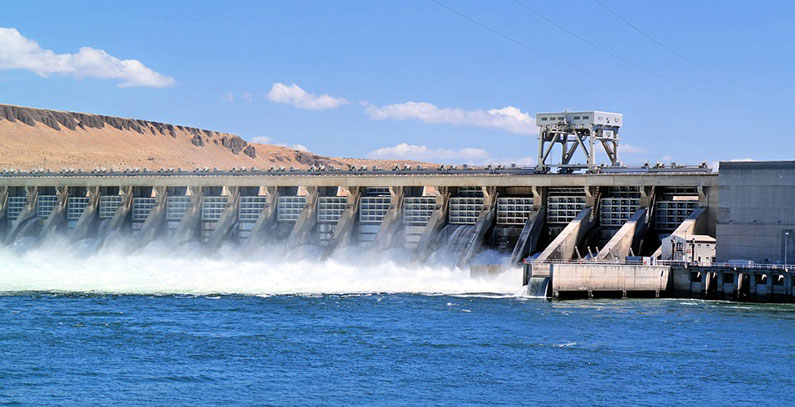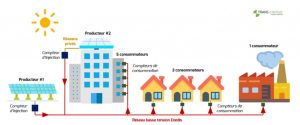In a power system with increased need for flexibility, wind and solar power are characterised by considerable volatility across different scales and their output cannot be predicted with certainty. In order to deal with the resulting variations and forecast errors, system operators as well as electricity markets will need to have access to increasing volumes of flexibility as the penetration of wind and solar power grows. Due to their flexibility and size, hydropower plants are perfectly suited for supplying these capabilities to current and future electricity markets and power systems. Storage as well as pump storage plants can be quickly started within a few minutes and adjust their output within seconds. Consequently, hydropower plants are able to follow even major variations in real time (Read : Hydraulic Storage and power generation).
1. Changes in the European power sector
Europe’s electricity landscape is undergoing profound changes, linked to the aim of a more renewable and low-carbon energy sector. By 2020, wind and solar generation are likely to make up 50% of RES power generation in Europe. This figure will inevitably rise. As a consequence, the electricity system will face ever more generation-driven fluctuations. These fluctuations will have to be dealt with through back-up power and flexible generation. Ensuring system stability and a continuous flow of electricity by balancing fluctuations in frequency and voltage will be the challenge of the future
In many power systems that have to handle increasing intermittency, available capacity needs to be present to backup variable RES. Handling the intermittent nature of variable RES is clearly a new driver of change in many power systems. It immediately suggests the need to ensure that firm capacity is available within the system to manage this intermittency. A great need for short-term and real-term balance between supply and demand remains in the future.
To sum up, this evolution raises two important issues:
- The variability of RES creates challenges for power markets in terms of supply adequacy, as additional standby capacity in one form or another (physical capacity, interconnections, demand response or storage) becomes necessary to cover peak demand when RES output is low.
- Higher RES penetration requires greater flexibility to respond to rapid changes in RES output and demand. This requires adapting market designs to minimize the cost of providing these services, including through the consideration of flexibility solutions.
What is the role of hydropower in this context?
2. The role of hydropower as flexibility solution
Several candidates are competing in the energy market to fill the gap between supply and demand induced by the non-dispatch able variability of RES: conventional power generation (operating in variable load mode), hydropower, energy storage, demand response, transmission networks. While firm capacity needs to be available in power systems that face growing intermittency, there will also be a growing demand for flexibility services. Flexibility should enable the system to respond to short-term and real-time variations in the supply/demand balance. This covers e.g. short-term reserves (generation, storage, demand) to cover potential incidents that decrease power supply to the system or to respond to short-term variations in demand and generation.
Ensuring a stable electricity flow in real time requires permanent monitoring of the transmission network. The key parameters that need to be controlled are power system real time characteristics such as frequency, voltage and plant performance characteristics such as reactive power, as well as inertia or spinning reserve of the system. These are the major factors enabling the right balance between variable and dispatchable generation. In addition, there will be more geographical changes, since it is difficult to plan the origin of generation in the transmission real time situations in a system with large amount of variable RES. This balance will be increasingly under strain due to the generation peaks and falls of variable RES. Hydropower is therefore a unique multitasking technology, which can deliver the entire range of system services.
Grid-stabilising services:
- Back-up and reserve
- Quick start capability
- Black start capability
- Regulation and frequency response
- Voltage support
- Spinning reserve
- Active and reactive power
- Inertia
From spot market gate closure to electricity dispatch there is still a significant deviation between the contracted variable generation and the actual generation. These deviations have to be corrected through balancing services bought on the (intraday or balancing) market when forecasts are corrected in a shorter time perspective than a day, or afterwards when TSOs have used their tools to keep the system in balance. Not all electricity generating technologies have the same technical flexibility when it comes to balancing demand fluctuations or providing back-up capacity for variable RES. Although all generation technologies participate in balancing, hydropower stands out with important benefits compared to other generation technologies. Hydropower offers capacity on the balancing market for upwards or downwards regulation. Note that this means a replacement of bidding on the spot market. Thus the price for balancing will be related to the spot price. Pumped storage is responsive to variations in the spot prices and thus provides a contribution to the balancing market. The typical storage time (i.e. the number of hours it can generate electricity before running out of water) for a pumped storage plant is between 4 to 10 hours (even larger in the Alpine region). Cascaded rivers system with hydro storage may also act on the balancing market in the same way. Hydropower plants may, depending on their design, provide electricity for base load and/or peak load. They are particularly valuable for meeting various demand situations, as they are more responsive than other generation sources e.g. nuclear or coal and can be started or stopped within a very short time. Hydropower units are also able to rapidly increase or decrease their output – at least 10 times faster than other conventional power plants.
Storage hydro takes advantage of large reservoirs with natural inflow of water and the possibility to reduce or increase the water outflow instantaneously. The water is stored in the reservoir and no pumps are needed (Read : hydraulic Storage : advantages and constraints). Pumped storage plants store energy by pumping water from a lower level to a higher level and convert the potential energy back into electricity. The plants have an upper and a lower reservoir, which can be natural or artificial (Read : Pumped storage plants).
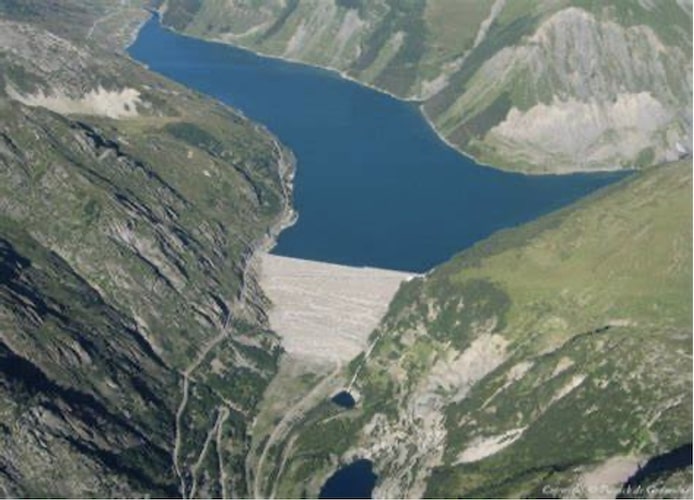
Figure 1: Grand Maison dam – [Source: © EDF – Patrick de Goumoëns http://www.manicore.com/documentation/stockage.html]
Both types of plants enable us to receive and store energy in periods of low demand or excessive production and generate electricity in times of higher demand. The storage possibilities combined with the instant startup and stop of generation makes hydropower very flexible. Further hydro storage is the only reliable large-scale storage technology available today. Pump storage plants like the Grand’Maison power station in France can generate up to 1.800 MW in only three minutes.
In addition to the flexibility of the power system, solutions to provide ancillary services are needed in the future. These are essential for the safe and stable operation of power grids. Until now ancillary services have been performed mainly by thermal and hydro power plants. In a power system with a high share of renewable energy and decreasing operating times of thermal power plants, the necessary ancillary services must be provided to an increasing amount of other elements of the energy system. Pumped storage plants are particularly suited to provide ancillary services for the secure network operation. Flexibility and ancillary services must be compensated according to their energy and macroeconomic benefits.
When competing in the flexibility and/or capacity market, the flexible asset will again be more competitive as it requires fewer earnings to provide its flexibility/availability product. This is the type of competitive marketplace that EURELECTRIC stands by, where the agents that play a more efficient role within the electricity systems are incentivised to stay in the system while delivering the most cost-efficient solution to the customer. The same goes for generators or demand response providers with low marginal costs that will have higher earnings in the energy market and in the same way have incentives to stay in the market.
3. The role of hydropower as provider of firm capacity
In contrast to flexibility, capacity should ensure long-term system adequacy in case of extreme load peaks or moments where capacity has to be available to back up intermittent renewable generation. When considering any given variable RES capacity, expressed through its installed capacity, only 10% or 20% of the total capacity can be considered reliable and dispatchable. The remainder is not always available when needed, thus resulting in more pressure on dispatchable generators which have to stand ready to generate the electricity required.
The ability to react and provide the needed services will determine which technology will primarily act as back-up to variable RES. In some markets this will be done by natural gas-fired generators, whilst in others hydropower with large storage capacities will be the preferred choice. Hydro (non-pumping) storage will have large volume capability to handle excess wind generation; pumped storage will have smaller storage volumes but still a high power capacity.
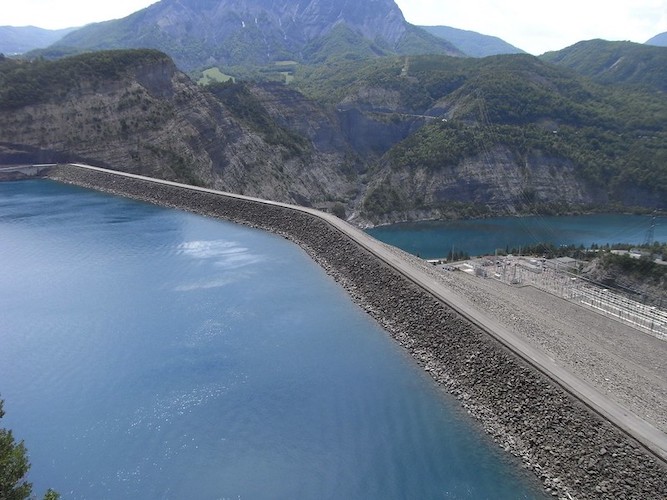
Figure 2: Hydraulic Lake Storage (Serre Ponçon) – [Source: The Serre Ponçon Dam – © Pierre Metivier / Flickr]
Hydro fills the gap between activation of thermal long term capacity and short term fluctuations in RES prediction, addressing short-term needs. Although hydropower plants are also exposed to variable natural inflows (river characteristics, weather conditions, etc.), plants with reservoirs are able to provide firm capacity to the power system. Whilst the level of firm capacity may vary depending on hydrological conditions, the relative size of the reservoir and the time horizon under consideration, they are providing significant benefits to the system (Read : Hydroelectricity : environmental and societal impacts).
The storage capabilities of many hydropower plants makes them a perfect instrument for optimising the use of variable RES over longer periods, i.e. for weeks, months or even entire seasons or years. This makes it possible to utilise energy available when there is an excess of electricity by returning it to the system during period when the supply of electricity from variable RES is limited.
Alongside providing firm capacity with a very low carbon footprint and having a role in climate change mitigation, hydropower also contributes to security of supply (Read : Hydraulics and hydroelectricity : the challenges of sustainable development). As for other capacity products hydropower contributes to security of supply according to its technical characteristics. Capacity products participating in capacity markets ought to be available for activation during the periods when the risk for the system is at its maximum, which reveals their contribution to security of supply through reducing the shortfall risk. A longer period of required availability usually reduces the ability of (pumped-storage) hydropower to participate, while storage hydro may have considerable duration (in extreme cases yearly storage). Availability of hydro could reduce the need for a strategic reserve in several Member States, for example Sweden and France.
4. A challenging business environment
Due to a challenging business environment for the energy sector today, also hydropower deployment in Europe faces several challenges concerning competitiveness. Capital costs are high, and payback starts late due to long permit granting procedures and construction times. Such a long permit granting procedure increases the uncertainty about the future regulatory framework, and represents a high risk at the time of the investment decision. Moreover, administrative barriers and regulatory changes during operation represent additional challenges. The above mentioned falling price spreads on the power exchange reduce the revenue possibilities of storage and pumped storage plants on the electricity market. Further uncertainties also arise from the development of the final consumer taxes (levies and fees for network use), that are an increasing burden for the pumped storage.
In General – decline of wholesale prices: Many factors influence the development of the wholesale prices. One element is due to the fact that these prices are formed by the costs of generating an additional unit of energy for each technology. Since, for decarbonised technologies, this additional cost is very close to zero (e.g., to produce an additional unit of wind energy, the only incremental resource needed is wind itself and not any other fuel), the wholesale price is dropping across wholesale markets. While, at first sight, this would be positive for customers, it works again as a disincentive for firm capacity providers to remain active.
Flexibility and ancillary services are not properly valued: power plants do not respond equally to power ramps. Different technologies entail different flexibility capability depending on the technical design. They can be more or less suited to adjusting their output to follow variable RES generation and ensuring that lights are kept on, but all of them are necessary in the different timescales (i.e. fastest technologies to respond in the first instance and the others to follow). Hydropower and especially hydro storage provide the required flexibility and can be used to balance between electricity demand and production. Various ancillary services such as providing positive and negative reserve, active and reactive power, redispatch or black start capability are used. These services and flexibility are currently not or only limited valued. This should be recognised by policymakers, who should also make sure that non-technical considerations do not prevent the different technologies from coming into play and contributing to increased flexibility and grid stability.
In particular for pump storage: The need for electricity storage to support large-scale variable renewable expansion is usually recognised, but is still not fully valued by the energy markets. The current economic model of energy storage does not justify investment in PSPP although it is the most competitive storage device. Indeed, the flexibility to balance and stabilize the power system is not properly valued by either the market (energy and capacity) or by the ancillary services model. Double grid fees hamper the economic operation and further expansion of pumped storage in major European countries with hydro potential (e.g. Germany, France, Germany, Austria). In several EU countries, existing regulation treats pumped storage both as a generation asset (it is hence required to pay a grid fee for transmission grid access) and as a final consumer (requiring it to pay the grid access fee a second time).
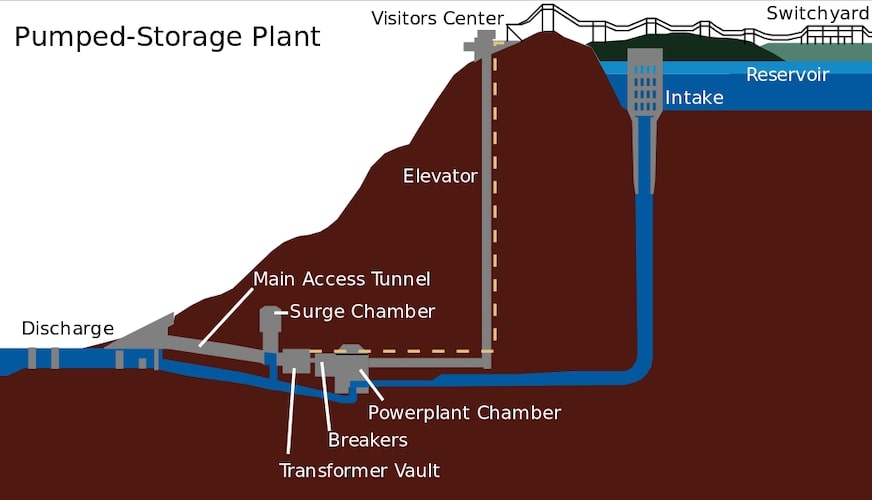
Figure 3: How a WWTP works – [Source: Wikipedia]
There is still significant hydropower potential to be optimised and developed in Europe (over 650 TWh a year). In order to make the best of it, since further development of hydropower will play a major role to secure system stability in the future, several measures need to be taken into account by policy makers.
5. Key measures to improve the competitiveness of hydropower
We recommend the following policy measures to policy makers:
5.1. Recognize the value of flexibility in the European power system
- An economic model for flexibility should be put into place. Flexibility should be priced through improved day-ahead, intraday, balancing and ancillary services markets. The design of the current balancing and intraday markets must be improved, introducing for instance possibilities to trade balancing forward and more sophisticated products, timeframes that better fit the flexibility requirements (ramp-up, ramp-down rates).
5.2. Recognize the value of ancillary services in the European power system
- Future electricity markets should further be developed to value and reward not only energy, but also capacity and all ancillary services and associated benefits. This will help enable the economic development of additional reservoir hydro power plants, run-off river plants and pumped storage to stabilized grids, ensure energy security in the short and long term, and integrate larger shares of variable RES.
5.3. Ensure that all technologies, sizes, existing and new plants can participate in capacity markets (no discrimination)
- Capacity products participating in capacity markets ought to be available for activation during the periods when the risk for the system is at its maximum, which reveals their contribution to security of supply through reducing the shortfall risk. A longer period of required availability usually reduces the ability of (pumped-storage) hydropower to participate. The definition of the required period of availability has therefore a significant impact on the participation of hydropower capacity in the market. Adequate market arrangements and technology requirements will lead to the development of cost-effective hydropower plants contributing to system’s needs.
- EURELECTRIC recognizes the need for an evolved market design where conventional generation, renewables, demand response and storage can participate in energy and capacity markets on an equal footing and are remunerated in the same way for the energy, capacity and flexibility that they provide.
- When discussing the introduction of capacity mechanisms the aspects of cost efficiency, compatibility with the European electricity market and technology openness have to be taken into account. With the possible introduction of a capacity mechanism it has to be ensured that current storage can participate in relevant procedures without discrimination. This applies both for new and for existing installations. In particular pump storage plants are able to provide guaranteed capacity flexible and with the necessary rate of power change.
5.4. Clarify the definition of storage and assure a level playing field between storage technologies, remove double grid fees for PSPP
- The definition of energy storage and pumped storage is currently not clearly defined by law. Energy storage is still classified as end consumer, because electricity is drawn from the grid. However, this definition does not do justice to the market role energy storage plants. With consumption from end consumers, electricity is finally removed from the grid. However, energy storage plants take for example the fluctuating feed-in from renewable energy in times of low load and feed it back into the grid in times of high demand. The energy is thus retained in the electricity system, after deducting the losses in efficiency.
- Create a level playing field in Europe for power generation from domestic water resources, compared with other electricity production and storage technologies, with a special focus on the value of providing flexibility to the electricity system.
- In several EU countries, existing regulation treats pumped storage both as a generation asset (it is hence required to pay a grid fee for transmission grid access) and as a final consumer (requiring it to pay the grid access fee a second time). Both types of treatment are discriminatory. Pumped storage does not constitute final electricity consumption, and it should therefore not be treated as such when setting grid fees (and taxation). Instead, national regulation should exempt pumped storage from grid fees for final consumers. In those countries the profitability of pumped storage assets is sometimes heavily affected, which has a negative impact on the availability of these assets for flexibility purposes.
5.5. Integrate RES into the market
- As RES mature and become major contributors to electricity of supply, their integration in electricity markets is crucial to enhance competitiveness and ensure that the future electricity mix is both environmentally friendly and economically sustainable. To this end, RES should be developed with cost-efficiency. This means applying the same rights and obligations of market participation as other market participants and cost-efficient RES support schemes should maximise market orientation and minimise market distortion to achieve competitiveness. For the period after 2020 a market-based and cost effective deployment of RES has to take place, progressively phasing out subsidies.
5.6. Strengthen the EU ETS
- When planning for future power system with increased flexibility and capacity demands it is crucial that the goals regarding CO2 emissions and sustainability are evaluated when designing markets for e.g. capacity. A strong emissions trading system should be a key driver for investment in mature low carbon technologies. National and European policies must be designed in a way that does not undermine the effectiveness of the EU ETS.
5.7. Invest in R&D
- Investments must be directed towards research, development and deployment programmes that allow equipment manufacturers and operators to improve power plant design, making units more flexible and responsive.
- For example activities within the EU Energy R&D programmes (including Horizon 2020) should more often address hydro future solutions.
BOX: Key Facts: why hydropower is essential for the European power system
- With 85 % – 95 % electricity efficiency, hydropower is the most efficient power generation technology
- Hydropower is crucial for system stability and security of supply and an enabler for large-scale integration of renewables.
- Hydropower provides the most efficient and only existing large-scale storage technology.
- The total installed storage capacity in Europe amounts to more than 180 TWh delivering short-, medium- and long-term storage capacity, depending on the size of its reservoirs.
- Hydropower has a very low carbon, water and land footprint and has a unique role in mitigation and adaptation to climate change.
- Hydropower has proven long-term profitability.
- Hydropower technology is a core European industry with a two-thirds world market penetration which secures thousands of high skilled jobs in Europe.
Appendix 1: The definition of flexibility
Flexibility aims to stabilize the grid on the time scale from second to hours. This covers short term market mechanism and ancillary services.
Power system stabilizing and balancing issues have to be analyzed at different time scales.
It’s especially the case to face intermittency of wind and solar included :
- Variability on the time scale from second to hour
- Dependence on natural resources availability on the scale from hour to weeks
Three stages for an efficient electricity market:
- Energy market aims to provide consumption by generation on the time scale from hour to years;
- Capacity market aims on the long term to guarantee from scarcity on the time scale from hour to weeks;
- Third one, flexibility from second to hours.
Providing flexibility depends on the ability of fast and frequent variations of the load curve. A characteristic of that ability is the length of the load curve per unit of time (cf. USA Federal Energy Act 2011).
Evaluating the need of flexibility is at the border between economical market models, statistical analysis of the equilibrium between consumption and generation, and theory of regulation, criteria of stability of the frequency control.
|
Time scale |
second | minute | hour | day | week | year | ||
| Energy market | ||||||||
| Capacity market | ||||||||
| Flexibility | ||||||||
| Market mechanism | Economical | model | ||||||
| Ancillary services | Theory of | regulation | ||||||
| Intermittency | Variability | Resource | availability | |||||
Source : GDF SUEZ SA
*Case studies on flexibility and firm capacity to be added (pumped storage, run-off river HPP)!
*Linkage with the macroeconomic study on hydropower
Boulevard de l’Impératrice, 66 – bte 2
B – 1000 Brussels • Belgium
Tel: + 32 2 515 10 00 • Fax: + 32 2 515 10 10
VAT: BE 0462 679 112 • www.eurelectric.org
L’Encyclopédie de l’Énergie est publiée par l’Association des Encyclopédies de l’Environnement et de l’Énergie (www.a3e.fr), contractuellement liée à l’université Grenoble Alpes et à Grenoble INP, et parrainée par l’Académie des sciences.
Pour citer cet article, merci de mentionner le nom de l’auteur, le titre de l’article et son URL sur le site de l’Encyclopédie de l’Énergie.
Les articles de l’Encyclopédie de l’Énergie sont mis à disposition selon les termes de la licence Creative Commons Attribution – Pas d’Utilisation Commerciale – Pas de Modification 4.0 International.

